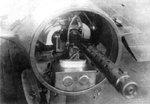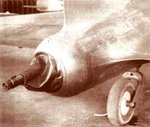CharlesBronson
Senior Master Sergeant
Japanese aircraft weapons of WW2.
When somebody really interested in aircraft armament of WW2 make a review of all the different designs emerged during the period of time from 1930 to 1945 the outcome is a somewhat puzzling. First of all the complete and absolute lack of standarization between the Army air Forces and Navy Fleet air Arm is quite evident.
The japanese case remembers a lot to the italian view on air combat, they started the war with nimble light fighters armed mostly with a pair of rifle caliber or heavy machineguns, but later they had to develop cannon armament quickly to deal with armored allied fighters and the ever increasing presence of heavy bombers on their homefront.
To obtain detailed information of every weapon is not an easy task because the dimentions, weights, rate of fire and other figures varied from source to source. Detail of ammunition types and variant are scarce too. Aniway althought not 100% accurate I think is relevant to have a recopilation of all the guns used by this country in the second great world conflict.

When somebody really interested in aircraft armament of WW2 make a review of all the different designs emerged during the period of time from 1930 to 1945 the outcome is a somewhat puzzling. First of all the complete and absolute lack of standarization between the Army air Forces and Navy Fleet air Arm is quite evident.
The japanese case remembers a lot to the italian view on air combat, they started the war with nimble light fighters armed mostly with a pair of rifle caliber or heavy machineguns, but later they had to develop cannon armament quickly to deal with armored allied fighters and the ever increasing presence of heavy bombers on their homefront.
To obtain detailed information of every weapon is not an easy task because the dimentions, weights, rate of fire and other figures varied from source to source. Detail of ammunition types and variant are scarce too. Aniway althought not 100% accurate I think is relevant to have a recopilation of all the guns used by this country in the second great world conflict.









